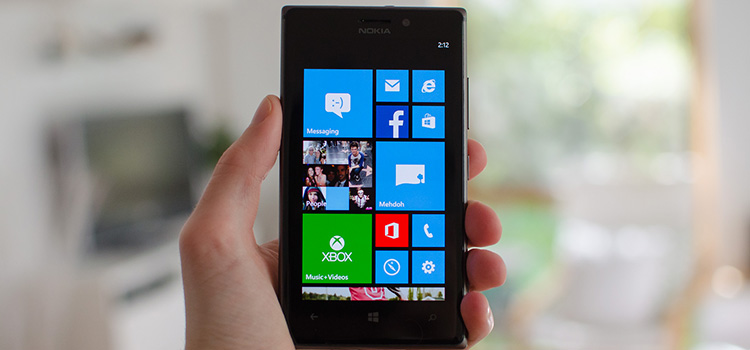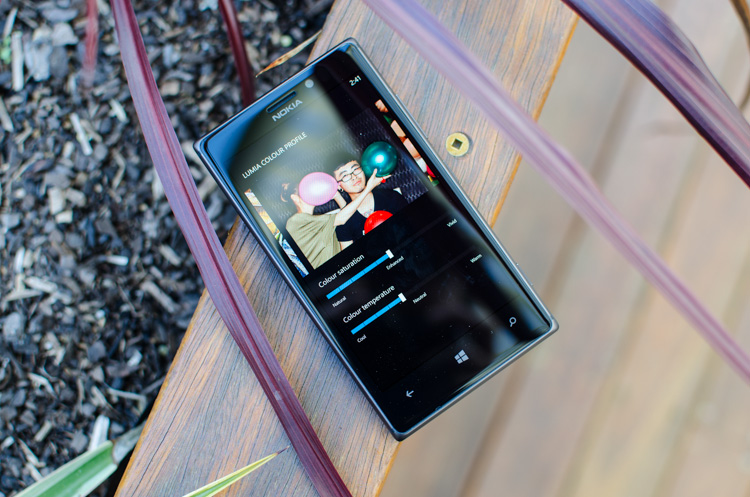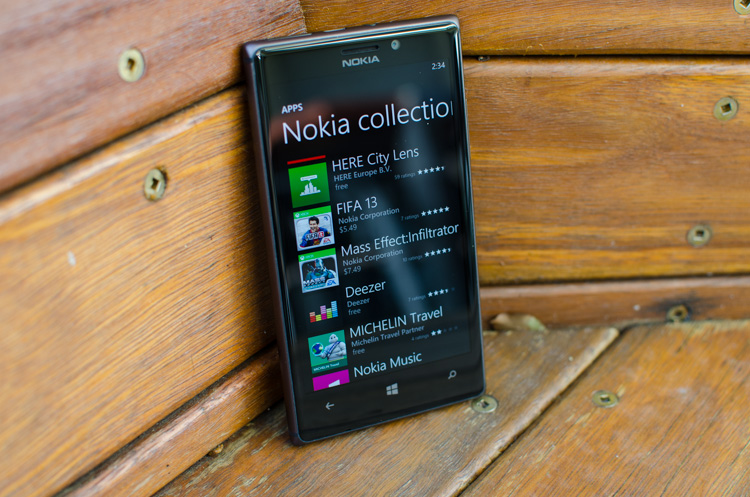Display, Software
In order to cut down on the Lumia 925's thickness Nokia changed the display type, replacing the IPS LCD for an AMOLED. Despite this change, most of the key stats remain the same: you're getting a 4.5-inch panel with a resolution of 1280 x 768 (WXGA) for a pixel density of 331 PPI. The same Nokia technology seen in the Lumia 920 has been ported over to the new phone including PureMotion HD+ (60 Hz refresh rate), ClearBlack (a series of polarization filters) and high-sensitivity touch that allows you to use the touchscreen with gloves on.
The IPS LCD display on the Lumia 920 was pretty decent, with this AMOLED being largely the same. However there are some differences and tradeoffs associated with switching to OLED-based technology, one of which is the necessity to use a PenTile subpixel matrix at this display density. The PenTile RGBG arrangement reduces the subpixel resolution but not the technical resolution of the display, resulting in sometimes grainy and less sharp images than a panel that uses the usual RGB stripe arrangement.
The denser a display is, the harder it is to notice the PenTile matrix. At 330 PPI it's very hard, but not impossible to notice its effects; it's most obvious around the edges of text which can appear not as crisp as the equivalent LCD panel. Generally speaking though you won't be closely scrutinizing the display, and so you'll be more than likely pleased with the density you're getting. It's not as crisp as the paper-like 1080p displays on high-end Android devices, but nevertheless very good for a smartphone.
The other main tradeoff with the switch to AMOLED is in white balance and brightness, as the technology can't really compete with LCD panels in this area. The Lumia 925's display is one of the best AMOLEDs I've seen recently for white balance, with only very slight tinting towards the yellow end of the spectrum. However, brightness is still several notches behind the top LCD panels, and while a selection of filters built into the panel help improve the outdoor readability of the phone's display, it's not quite as good as I experienced with the Lumia 920.
Having that said, in some respects I prefer this display type for Windows Phones because of one key aspect: black levels. As AMOLED displays have no backlight they have fantastic contrast and black levels as the display effectively turns off when it has to display black. The Windows Phone UI features large blocks of black and so strong performance in displaying blacks is a perfect match. AMOLED panels also have a power consumption advantage in some circumstances, which becomes especially handy for a few of Nokia's software features.
Some types of AMOLED panels and their firmware configurations can oversaturate colors, but Nokia puts the control of color quality in the hands of users. In the Display+Touch settings you can change the color profile by adjusting the saturation and temperature of the display. The default settings are very solid, producing vivid but not too oversaturated colors, and I moved the temperature slider one bar to the left (from neutral towards cool) to improve the slight tinting.
Out of the range of displays used on Windows Phones I would say this is one of the best, improving on the IPS panel of the Lumia 920 with a few tradeoffs. It's not the best smartphone display I've seen - I still prefer the Super LCD 3 panel used on HTC devices - but it's still very good.
Software
As with all of Nokia's Lumia smartphones, the Lumia 925 is running Windows Phone, which comes out of the box with GDR2, the latest software release. Despite the latest update, the experience between Windows Phones is largely the same, so I'll point you to my Windows Phone 8 review so you can get an idea of what to expect from the phone's software.
Since then Nokia has introduced a few handy software features that are exclusive to their Lumia line. One of my favorites, and newly introduced with the 925, is the option to display the time on the display even when the phone's screen is "off". With a setting to have it only display for the first 15 minutes after the screen is turned off, it strikes a perfect balance between battery life and handy information. While charging, the time is always displayed, and as I charge my phones beside my bed it provides a quick, easy glance all the time.
FM radio support also comes handy for those who enjoy listening to the radio as opposed to downloaded music on your phone. Another new feature keeps the touchscreen on all the time. If you enable it, you can double-tap the touchscreen to turn on the phone. The double-tap requires perfect timing, as the Lumia 925 won't turn on the display if you're too quick or too slow with the two taps, so around half the time I found it didn't work as desired.
While the Lumia 925 has a strong feature set from both Windows Phone and Nokia's enhancements, there's still an app problem. Windows Phone, even with over 100,000 apps in the Store, simply doesn't have the same abundance of quality apps as with other platforms. Yes, there's technically some third party alternatives to big services such as Instagram, and yes there are first party apps for even larger services like Facebook and Twitter, but there's a distinct lack of quality.
Many multiplatform apps that are available for Windows Phone are simply better on Android or iOS, Twitter being one example that wastes a phenomenal amount of vertical space on Windows Phone to make it a mediocre client compared to their other efforts. Third party apps for Instagram and Snapchat allow you to use the services, but again they're not as good as official apps. And the mentality of developers to create apps for Android and iOS first, with Windows Phone only a maybe is seriously hurting the platform.
If you're not an app person, or have faith that during your time with the Lumia 925 the situation will get better, then the features available in the OS of Windows Phone may appeal to you. Otherwise, it may be best to consider other high-end phones that either use iOS or Android.





